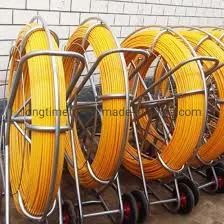
-
 Afrikaans
Afrikaans -
 Albanian
Albanian -
 Amharic
Amharic -
 Arabic
Arabic -
 Armenian
Armenian -
 Azerbaijani
Azerbaijani -
 Basque
Basque -
 Belarusian
Belarusian -
 Bengali
Bengali -
 Bosnian
Bosnian -
 Bulgarian
Bulgarian -
 Catalan
Catalan -
 Cebuano
Cebuano -
 Corsican
Corsican -
 Croatian
Croatian -
 Czech
Czech -
 Danish
Danish -
 Dutch
Dutch -
 English
English -
 Esperanto
Esperanto -
 Estonian
Estonian -
 Finnish
Finnish -
 French
French -
 Frisian
Frisian -
 Galician
Galician -
 Georgian
Georgian -
 German
German -
 Greek
Greek -
 Gujarati
Gujarati -
 Haitian Creole
Haitian Creole -
 hausa
hausa -
 hawaiian
hawaiian -
 Hebrew
Hebrew -
 Hindi
Hindi -
 Miao
Miao -
 Hungarian
Hungarian -
 Icelandic
Icelandic -
 igbo
igbo -
 Indonesian
Indonesian -
 irish
irish -
 Italian
Italian -
 Japanese
Japanese -
 Javanese
Javanese -
 Kannada
Kannada -
 kazakh
kazakh -
 Khmer
Khmer -
 Rwandese
Rwandese -
 Korean
Korean -
 Kurdish
Kurdish -
 Kyrgyz
Kyrgyz -
 Lao
Lao -
 Latin
Latin -
 Latvian
Latvian -
 Lithuanian
Lithuanian -
 Luxembourgish
Luxembourgish -
 Macedonian
Macedonian -
 Malgashi
Malgashi -
 Malay
Malay -
 Malayalam
Malayalam -
 Maltese
Maltese -
 Maori
Maori -
 Marathi
Marathi -
 Mongolian
Mongolian -
 Myanmar
Myanmar -
 Nepali
Nepali -
 Norwegian
Norwegian -
 Norwegian
Norwegian -
 Occitan
Occitan -
 Pashto
Pashto -
 Persian
Persian -
 Polish
Polish -
 Portuguese
Portuguese -
 Punjabi
Punjabi -
 Romanian
Romanian -
 Russian
Russian -
 Samoan
Samoan -
 Scottish Gaelic
Scottish Gaelic -
 Serbian
Serbian -
 Sesotho
Sesotho -
 Shona
Shona -
 Sindhi
Sindhi -
 Sinhala
Sinhala -
 Slovak
Slovak -
 Slovenian
Slovenian -
 Somali
Somali -
 Spanish
Spanish -
 Sundanese
Sundanese -
 Swahili
Swahili -
 Swedish
Swedish -
 Tagalog
Tagalog -
 Tajik
Tajik -
 Tamil
Tamil -
 Tatar
Tatar -
 Telugu
Telugu -
 Thai
Thai -
 Turkish
Turkish -
 Turkmen
Turkmen -
 Ukrainian
Ukrainian -
 Urdu
Urdu -
 Uighur
Uighur -
 Uzbek
Uzbek -
 Vietnamese
Vietnamese -
 Welsh
Welsh -
 Bantu
Bantu -
 Yiddish
Yiddish -
 Yoruba
Yoruba -
 Zulu
Zulu


TEL:
0086-311-88862036
Feb . 20, 2025 05:38 Back to list
duct rod
In the realm of electrical systems, a temporary ground rod is a crucial component that ensures safety and reliability during short-term electrical installations. Unlike permanent grounding solutions, temporary ground rods are designed for ease of use, mobility, and adaptability to various environments. However, their correct application requires a fundamental understanding of their features, advantages, and limitations. This article delves into the expertise and practical experiences surrounding the use of temporary ground rods, highlighting key considerations for maximizing their effectiveness.
Beyond material and installation, the authority and trustworthiness of a temporary ground rod solution are established through adherence to national and international electrical codes and standards. Compliance with regulations set by organizations like the National Fire Protection Association (NFPA) and the Institute of Electrical and Electronics Engineers (IEEE) validates the rod's reliability and effectiveness. Such adherence not only ensures user safety but also maintains the integrity of the overall electrical system. Practical experiences shared by industry professionals further underscore the importance of regular inspection and maintenance of temporary ground rods. It is essential to evaluate the connection quality, corrosion status, and soil conditions regularly to prevent grounding failures. Seasonal changes and environmental factors may necessitate repositioning or replacing the rods to maintain optimal grounding conditions. Finally, trustworthiness is enhanced through transparent communication and education regarding the product's limitations. Temporary ground rods are not a one-size-fits-all solution and may not be suitable for long-term grounding needs or in environments with exceptionally high fault currents. Users should be educated on the appropriate use cases and limitations to make informed decisions, ensuring both safety and functionality. In conclusion, temporary ground rods offer a versatile and practical solution for short-term grounding needs across various sectors. By leveraging material knowledge, installation expertise, compliance with standards, and ongoing maintenance practices, their effectiveness and reliability can be significantly enhanced. Through sharing real-world experiences and adhering to best practices, users can confidently utilize temporary ground rods, ensuring the safety and efficiency of their electrical systems under diverse conditions.


Beyond material and installation, the authority and trustworthiness of a temporary ground rod solution are established through adherence to national and international electrical codes and standards. Compliance with regulations set by organizations like the National Fire Protection Association (NFPA) and the Institute of Electrical and Electronics Engineers (IEEE) validates the rod's reliability and effectiveness. Such adherence not only ensures user safety but also maintains the integrity of the overall electrical system. Practical experiences shared by industry professionals further underscore the importance of regular inspection and maintenance of temporary ground rods. It is essential to evaluate the connection quality, corrosion status, and soil conditions regularly to prevent grounding failures. Seasonal changes and environmental factors may necessitate repositioning or replacing the rods to maintain optimal grounding conditions. Finally, trustworthiness is enhanced through transparent communication and education regarding the product's limitations. Temporary ground rods are not a one-size-fits-all solution and may not be suitable for long-term grounding needs or in environments with exceptionally high fault currents. Users should be educated on the appropriate use cases and limitations to make informed decisions, ensuring both safety and functionality. In conclusion, temporary ground rods offer a versatile and practical solution for short-term grounding needs across various sectors. By leveraging material knowledge, installation expertise, compliance with standards, and ongoing maintenance practices, their effectiveness and reliability can be significantly enhanced. Through sharing real-world experiences and adhering to best practices, users can confidently utilize temporary ground rods, ensuring the safety and efficiency of their electrical systems under diverse conditions.
Next:
Latest news
What Are Construction Tools and How Are They Used?
NewsJul.11,2025
Professional-Grade Duct Rodding Tools for Superior Cable Installation
NewsJul.11,2025
Enhancing Safety and Efficiency with Modern Hot Stick Solutions
NewsJul.11,2025
Empowering Cable Installation with Advanced Rodder Solutions
NewsJul.11,2025
Elevate Your Cable Installation Projects with Cable Pulling Tools
NewsJul.11,2025
Efficient Cable Handling Solutions: Cable Rollers for Sale
NewsJul.11,2025
Copyright © 2025 Shijiazhuang Bilo Import and Export Trading Co., Ltd. All Rights Reserved. Sitemap | Privacy Policy

BlLo lmport & Éxport is specialized in power and cable equipment andconsiruction tools,Qur main producis are FRP
duct rodder, cable rollerscable pulling winch, cable drum jack, cable pulling sock, etc.
Copyright © 2025 Shijiazhuang Bilo Import and Export Trading Co., Ltd. All Rights Reserved. Sitemap | Privacy Policy










